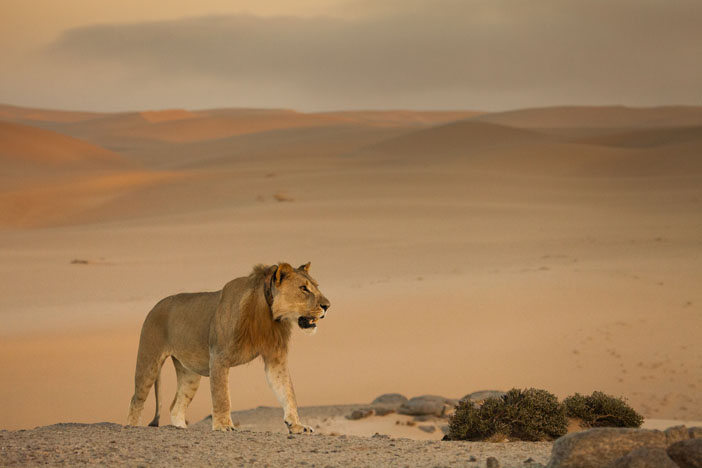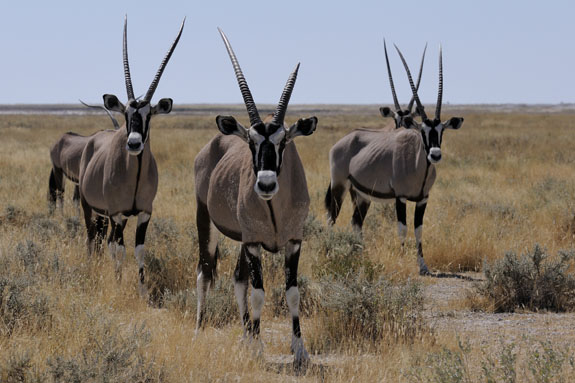Elephant
Desert elephants are not a distinct species of elephant but are African bush elephants (Loxodonta africana) that have made their homes in the Namib and Sahara deserts. It was believed at one time that they were a subspecies of the African bush elephant but this is no longer thought to be the case. Desert-dwelling elephants were once more widespread in Africa than they are now and are currently found only in Namibia and Mali. They tend to migrate from one waterhole to another following traditional routes which depend on the seasonal availability of food and water. They face pressure from poaching and from changes in land use by humans. Ref.
Lion

Namibian lions have been studied and monitored intensively since 1980. The Carnivore Atlas (Stander & Hanssen 2004) estimates a population of 562-894 lions in three density distribution categories. There are five sub-populations, and only the reintroduced population (Kalahari Game Lodge) is isolated. The low-density distribution area represents both resident lions, at low density, and nomadic or dispersing lions. There is good evidence of lions moving between the Kunene/Etosha sub-populations, and between the Caprivi/Kaudum sub-populations. The two western sub-populations are effectively cut-off from the east, where lions form part of a larger population linking southern and East Africa. Ref.
Gemsbok

The Gemsbok (Oryx gazella) is the common name given to the largest and most well known of the 3 species of Oryx. Due to their horns being so lethal, Gemsbok have also been called the 'Sabre Antelope'. Its name is actually derived from the German word for a male chamois, although they are not related. Gemsbok are distributed around deserts, scrublands and brushlands in South Western Africa. Ref.

